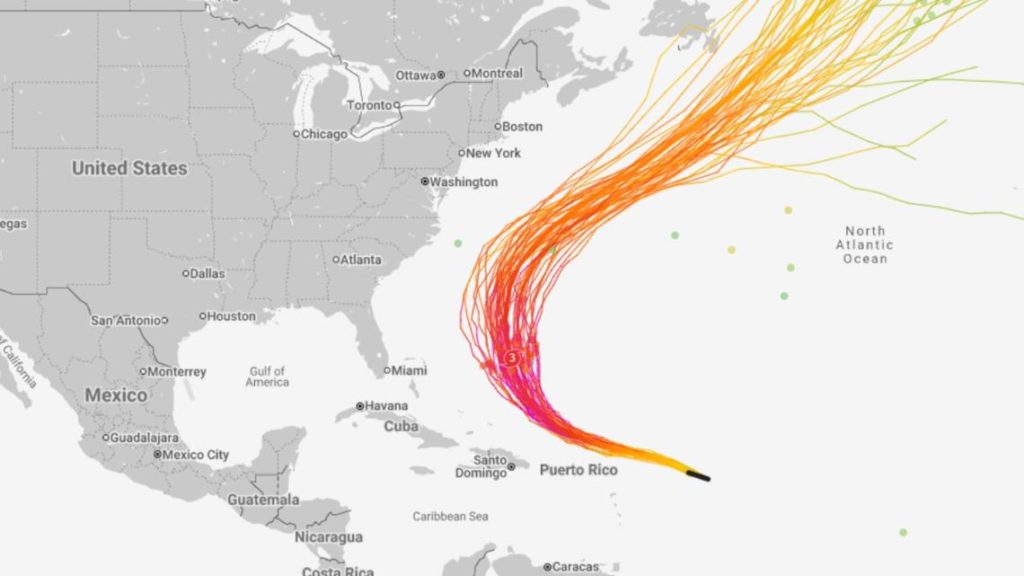Weather Lab is Google DeepMind’s new, experimental AI-based model for forecasting cyclones. NOAA is working with Google to evaluate the effectiveness of the model.
ATLANTA — As Hurricane Erin churns in the Atlantic, the National Hurricane Center is incorporating a new forecasting tool this season: a machine-learning weather model developed by Google DeepMind.
Google’s Weather Lab team has spent years experimenting with artificial intelligence weather forecasting, attempting to answer whether AI can predict hurricanes better than traditional weather models.
“We’ve got these amazing models produced by NOAA, by the European Centre for Medium Range Weather Forecasting (ECMWF) that use the laws of physics to predict forward what the weather is going to be,” Olivia Graham, a project manager for Weather Lab, said. “Our teams asked themselves, could we train a model based on decades of historical weather data to even without access to those underlying laws of physics, infer patterns and predict the future?”
Traditional weather models rely on the laws of physics and thermodynamics to model atmospheric behavior and storm paths. Google’s DeepMind model eliminates those equations, instead using pattern recognition from 50 years of historical storm data to predict hurricane tracks.
Google’s model can be fine-tuned and adapted as climate conditions change, unlike physics-based models which are more time-intensive to modify. Graham said her team is able to fine tune the model, telling it to learn from the past 50 years but optimize for more recent years of conditions or specific variables.
Weather Lab’s model was trained using a reanalysis model from the ECMWF. That data, paired with an archive of past hurricanes optimized the model’s performance for certain weather events.
The first models from Google could predict precipitation for the next 12 hours in regions with dense radar coverage. That limited the scope to areas including the United States, Europe, and Japan. From there, Graham said they have been continuing to progress their weather research, creating a 14-day forecast, showing an ensemble of ways that weather can evolve, and working to train their models to better capture the intensity of hurricanes.
“It’s kind of a continuous conversation with the community as we understand what are the big challenging problems that need to be solved and are we well positioned to help advance the science and hopefully solve them,” Graham said.
Weather Lab’s website displays the machine-learning model’s most likely storm track along with ensembles showing up to 50 alternative scenarios for storm strength and direction. The company has established a research partnership with the National Hurricane Center to refine their approach.
“It blows my mind that when I talk to scientists, when I talk to our colleagues at the National Hurricane Center who’ve spent their lives studying hurricanes that they can’t believe how quickly this is moving and how quickly we’re starting to see improvements,” Graham said. “So my hope is that this is just the beginning and that we’ll continue to see field defining breakthroughs and rapid progress in this space.”
Despite promising results, the AI model does not yet address all impacts of hurricanes. Storm surge and inland flooding, not wind, cause the majority of deaths in landfalling hurricanes.
“That’s what we’re trying to understand or what are these big problems where we might have an opportunity to come in and really build something that is very, very useful for the community,” Graham said. “We continue to think about what else could we do in this space and what are the needs of the community, what are the needs of forecasters, and can AI support in those spaces.”

